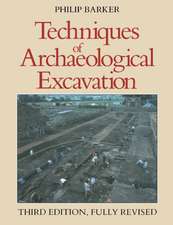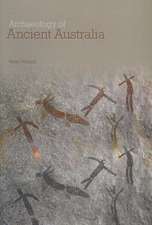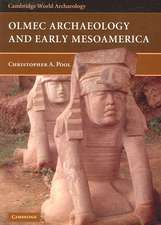After Collapse: The Regeneration of Complex Societies
Editat de Glenn M. Schwartz, John J. Nicholsen Limba Engleză Paperback – 15 aug 2010
From the Euphrates Valley to the southern Peruvian Andes, early complex societies have risen and fallen, but in some cases they have also been reborn. Prior archaeological investigation of these societies has focused primarily on emergence and collapse. This is the first book-length work to examine the question of how and why early complex urban societies have reappeared after periods of decentralization and collapse.
Ranging widely across the Near East, the Aegean, East Asia, Mesoamerica, and the Andes, these cross-cultural studies expand our understanding of social evolution by examining how societies were transformed during the period of radical change now termed “collapse.” They seek to discover how societal complexity reemerged, how second-generation states formed, and how these re-emergent states resembled or differed from the complex societies that preceded them.
The contributors draw on material culture as well as textual and ethnohistoric data to consider such factors as preexistent institutions, structures, and ideologies that are influential in regeneration; economic and political resilience; the role of social mobility, marginal groups, and peripheries; and ethnic change. In addition to presenting a number of theoretical viewpoints, the contributors also propose reasons why regeneration sometimes does not occur after collapse. A concluding contribution by Norman Yoffee provides a critical exegesis of “collapse” and highlights important patterns found in the case histories related to peripheral regions and secondary elites, and to the ideology of statecraft.
After Collapse blazes new research trails in both archaeology and the study of social change, demonstrating that the archaeological record often offers more clues to the “dark ages” that precede regeneration than do text-based studies. It opens up a new window on the past by shifting the focus away from the rise and fall of ancient civilizations to their often more telling fall and rise.
CONTRIBUTORS
Bennet Bronson
Arlen F. Chase
Diane Z. Chase
Christina A. Conlee
Lisa Cooper
Timothy S. Hare
Alan L. Kolata
Marilyn A. Masson
Gordon F. McEwan
Ellen Morris
Ian Morris
Carlos Peraza Lope
Kenny Sims
Miriam T. Stark
Jill A. Weber
Norman Yoffee
Ranging widely across the Near East, the Aegean, East Asia, Mesoamerica, and the Andes, these cross-cultural studies expand our understanding of social evolution by examining how societies were transformed during the period of radical change now termed “collapse.” They seek to discover how societal complexity reemerged, how second-generation states formed, and how these re-emergent states resembled or differed from the complex societies that preceded them.
The contributors draw on material culture as well as textual and ethnohistoric data to consider such factors as preexistent institutions, structures, and ideologies that are influential in regeneration; economic and political resilience; the role of social mobility, marginal groups, and peripheries; and ethnic change. In addition to presenting a number of theoretical viewpoints, the contributors also propose reasons why regeneration sometimes does not occur after collapse. A concluding contribution by Norman Yoffee provides a critical exegesis of “collapse” and highlights important patterns found in the case histories related to peripheral regions and secondary elites, and to the ideology of statecraft.
After Collapse blazes new research trails in both archaeology and the study of social change, demonstrating that the archaeological record often offers more clues to the “dark ages” that precede regeneration than do text-based studies. It opens up a new window on the past by shifting the focus away from the rise and fall of ancient civilizations to their often more telling fall and rise.
CONTRIBUTORS
Bennet Bronson
Arlen F. Chase
Diane Z. Chase
Christina A. Conlee
Lisa Cooper
Timothy S. Hare
Alan L. Kolata
Marilyn A. Masson
Gordon F. McEwan
Ellen Morris
Ian Morris
Carlos Peraza Lope
Kenny Sims
Miriam T. Stark
Jill A. Weber
Norman Yoffee
Preț: 289.96 lei
Nou
Puncte Express: 435
Preț estimativ în valută:
55.49€ • 59.33$ • 46.26£
55.49€ • 59.33$ • 46.26£
Carte tipărită la comandă
Livrare economică 17 aprilie-01 mai
Preluare comenzi: 021 569.72.76
Specificații
ISBN-13: 9780816529360
ISBN-10: 0816529361
Pagini: 336
Dimensiuni: 152 x 229 x 10 mm
Greutate: 0.4 kg
Ediția:1
Editura: University of Arizona Press
Colecția University of Arizona Press
ISBN-10: 0816529361
Pagini: 336
Dimensiuni: 152 x 229 x 10 mm
Greutate: 0.4 kg
Ediția:1
Editura: University of Arizona Press
Colecția University of Arizona Press
Notă biografică
Glenn M. Schwartz is Whiting Professor of Archaeology at the Johns Hopkins University and coauthor of The Archaeology of Syria: From Complex Hunter-Gatherers to Early Urban Societies. John J. Nichols received his Ph.D. in Near Eastern archaeology from Johns Hopkins University in 2004.
Cuprins
1 From Collapse to Regeneration
Glenn M. Schwartz
2 The Demise and Regeneration of Bronze Age Urban Centers in the Euphrates Valley of Syria
Lisa Cooper
3 Amorites, Onagers, and Social Reorganization in Middle Bronze Age Syria
John J. Nichols and Jill A. Weber
4 “Lo, Nobles Lament, the Poor Rejoice”: State Formation in the Wake of Social Flux
Ellen Morris
5 The Collapse and Regeneration of Complex Society in Greece, 1500-500 BC
Ian Morris
6 Inca State Origins: Collapse and Regeneration in the Southern Peruvian Andes
Gordon F. McEwan
7 Regeneration as Transformation: Postcollapse Society in Nasca, Peru
Christina A. Conlee
8 After State Collapse: How Tumilaca Communities Developed in the Upper Moquegua Valley, Peru
Kenny Sims
9 Patterns of Political Regeneration in Southeast and East Asia
Bennet Bronson
10 From Funan to Angkor: Collapse and Regeneration in Ancient Cambodia
Miriam T. Stark
11 Framing the Maya Collapse: Continuity, Discontinuity, Method, and Practice in the Classic to Postclassic Southern Maya Lowlands
Diane Z. Chase and Arlen F. Chase
12 Postclassic Maya Society Regenerated at Mayapán
Marilyn A. Masson, Timothy S. Hare, and Carlos Peraza Lope
13 Before and After Collapse: Reflections on the Regeneration of Social Complexity
Alan L. Kolata
14 Notes on Regeneration
Norman Yoffee
References
About the Editors
About the Contributors
Index
Glenn M. Schwartz
2 The Demise and Regeneration of Bronze Age Urban Centers in the Euphrates Valley of Syria
Lisa Cooper
3 Amorites, Onagers, and Social Reorganization in Middle Bronze Age Syria
John J. Nichols and Jill A. Weber
4 “Lo, Nobles Lament, the Poor Rejoice”: State Formation in the Wake of Social Flux
Ellen Morris
5 The Collapse and Regeneration of Complex Society in Greece, 1500-500 BC
Ian Morris
6 Inca State Origins: Collapse and Regeneration in the Southern Peruvian Andes
Gordon F. McEwan
7 Regeneration as Transformation: Postcollapse Society in Nasca, Peru
Christina A. Conlee
8 After State Collapse: How Tumilaca Communities Developed in the Upper Moquegua Valley, Peru
Kenny Sims
9 Patterns of Political Regeneration in Southeast and East Asia
Bennet Bronson
10 From Funan to Angkor: Collapse and Regeneration in Ancient Cambodia
Miriam T. Stark
11 Framing the Maya Collapse: Continuity, Discontinuity, Method, and Practice in the Classic to Postclassic Southern Maya Lowlands
Diane Z. Chase and Arlen F. Chase
12 Postclassic Maya Society Regenerated at Mayapán
Marilyn A. Masson, Timothy S. Hare, and Carlos Peraza Lope
13 Before and After Collapse: Reflections on the Regeneration of Social Complexity
Alan L. Kolata
14 Notes on Regeneration
Norman Yoffee
References
About the Editors
About the Contributors
Index
Recenzii
“The impact of this book will be long-lasting, as each of the studies are quite impressive new analyses of recent archaeological studies.”—Jonathan Kenoyer, University of Wisconsin, Madison

















